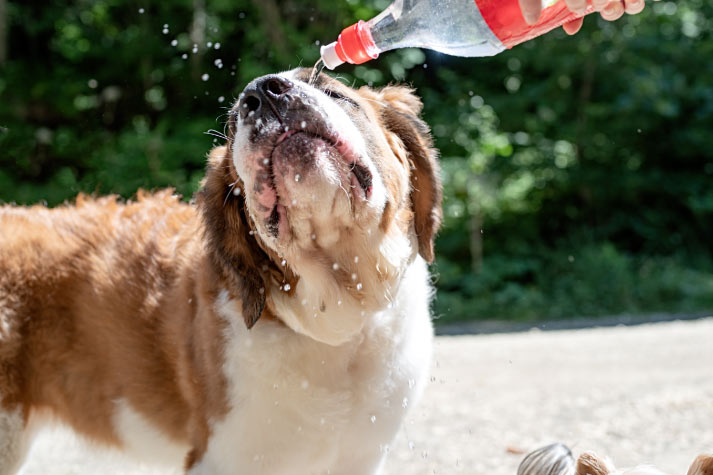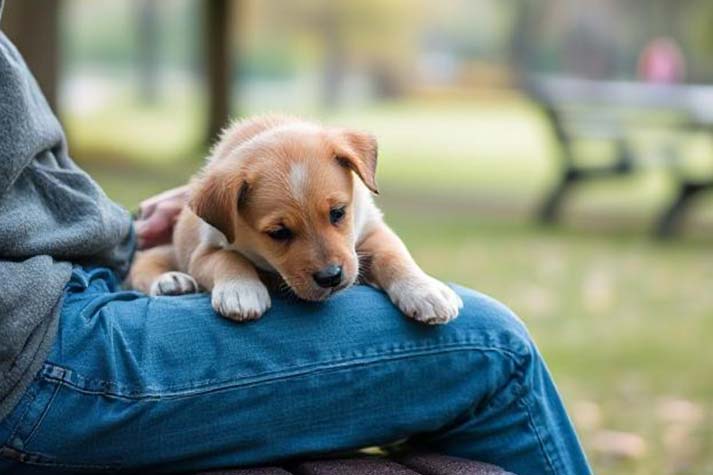
17 Mar
How to Protect Your Pet from the Summer Heat: Essential Tips for Pet Travel
As the summer heat intensifies, it’s important to remember that while we have the luxury of air conditioning and cold drinks to help us stay cool, our pets rely on us to keep them comfortable and safe. High temperatures can be especially hard on pets, and without the proper precautions, they can quickly become overheated or dehydrated. However, with a bit of extra care and awareness, you can ensure that your furry friend remains healthy and happy even during the hottest months of the year. Here are some practical tips to help your pet beat the heat and avoid the risks of dehydration or heatstroke.
Prevent Dehydration
Unlike humans, pets don’t have the ability to cool down by sweating. Dogs and cats, for example, only sweat through their paw pads, which is not enough to regulate their body temperature. This makes them more vulnerable to dehydration, especially when they are outside or active in hot weather.
To prevent dehydration, always make sure that your pet has access to fresh, cool water. Place water bowls in several areas around the house, especially in shaded or cool spots where your pet likes to rest. If you’re going out, take a portable water container to keep them hydrated while on the go. Additionally, consider giving your pet water-rich foods or switching to a wet diet during the summer, as this can help increase their fluid intake.
Signs of dehydration in pets include:
- Panting
- Dry nose or gums
- Thick saliva
- Lethargy or tiredness
- Sunken eyes
- Loss of skin elasticity
If you notice any of these signs, encourage your pet to drink more water and seek veterinary care if the symptoms persist.
Be Aware of Heatstroke
Heatstroke is one of the most dangerous risks a pet faces during the summer, becoming a real issue when embarking on pet travel. It occurs when their body temperature rises to dangerous levels, and they can no longer cool themselves down effectively. This condition requires immediate attention, as it can lead to organ damage, collapse, or even death if not treated promptly. If you’re on a pet relocation and notice any signs of heatstroke, move to a cool, shaded area immediately.
Your pet’s body temperature should never exceed 104°F (40°C). If you suspect that your pet is suffering from heatstroke, quickly move them to a cooler area and try to reduce their body temperature by offering small amounts of water or using cool (but not icy) water to dampen their fur. You can also use a fan to help bring their temperature down. However, if their condition doesn’t improve, it’s crucial to visit the vet right away.
Early signs of heatstroke include:
- Heavy panting
- Rapid breathing
- Excessive drooling
- Bright red gums or tongue
- Difficulty walking or balance issues
In more severe cases, heatstroke can lead to:
- Pale or blue gums
- Drowsiness or lethargy
- Vomiting
- Uncontrollable urination or defecation
- Collapse or seizures
If your pet shows any of these advanced symptoms, seek emergency veterinary care immediately.
Keep Your Pet Cool at Home and Outdoors
During the hottest parts of the day, it’s best to keep your pet indoors where it’s cooler. However, if you do need to take them outside, try to do so in the early morning or late evening when temperatures are lower. Avoid the midday sun, as that’s when the heat is most intense.
Ways to keep your pet cool:
- Provide plenty of fresh water: Keep your pet’s water bowl filled throughout the day, and consider adding ice cubes to help keep it cool. You can also offer water-rich treats like cucumber slices or small pieces of watermelon (without seeds).
- Create a cool indoor environment: Close the windows, draw the curtains, and use fans or air conditioning to keep your home comfortable. Make sure your pet has access to a cool, shaded spot to rest during the hottest hours of the day.
- Grooming: Regular grooming is essential in the summer, especially for long-haired breeds. Trimming their fur can help them stay cooler but avoid shaving them too close to the skin as this can increase the risk of sunburn. Consult your vet or groomer on the best grooming routine for your pet during the summer.
- Avoid Pet Travel During the Heat: While it’s important to keep your pet active, avoid rigorous exercise in the heat. If you take your dog for walks, do so early in the morning or after sunset when the ground is cooler. Before heading out, check the pavement by placing the back of your hand on it—if it’s too hot for your hand, it’s too hot for your pet’s paws. Stick to grassy or shaded areas whenever possible.
- Paw protection: Hot pavements can cause serious burns to your pet’s paw pads. If your pet is sensitive to heat, consider using protective booties or paw wax to provide an extra layer of protection.
Prepare for Emergencies
It’s always a good idea to have your vet’s contact information readily available, especially during the summer months when the risk of heat-related conditions is higher. Make sure your pet is up to date on vaccinations and schedule a check-up before the heat hits to ensure they are in good health.
If you’re traveling with your pet, consider heading to cooler climates where the temperature will be more comfortable for them. International pet travel will also take you across climates as you cross countries, so bear that in mind. When traveling by car, never leave your pet unattended, as the temperature inside a parked vehicle can rise dangerously high in a matter of minutes.
Conclusion
Your pet’s health and safety are in your hands, and taking the right precautions can make all the difference during the summer heat. Keep them hydrated, limit their time in the sun, and always watch for signs of overheating. By following these simple tips, you can ensure that your furry friend stays happy, healthy, and cool all summer long. Don’t forget to consult your vet if you have any concerns or if your pet shows signs of distress in the heat. With a little extra care, you and your pet can enjoy a fun and safe summer together!






AUTHOR’S BIO
Carry My Pet
Passionate pet enthusiasts and globetrotters, dedicated to easing furry friends' journeys worldwide. Penning tales of compassion at CarryMyPet, where every relocation is a tail-wagging adventure.